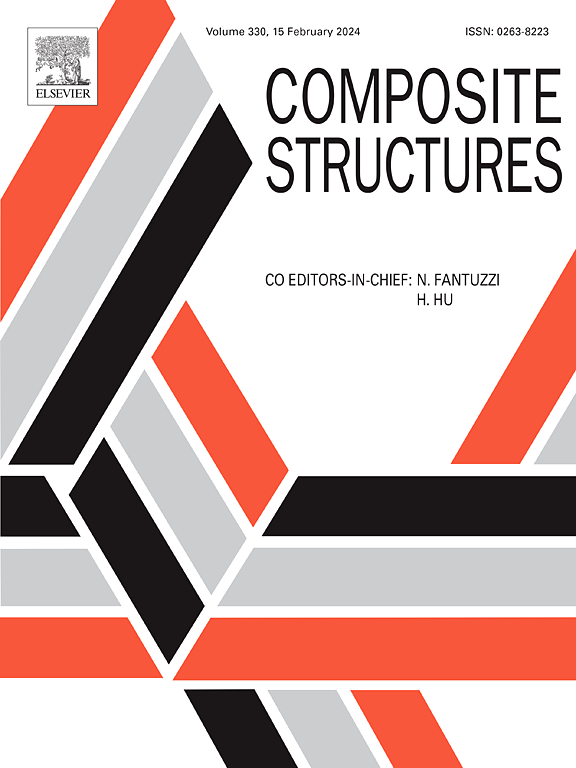High-sensitivity rGO/epoxy strain sensor integrated into CFRP composite structures
IF 6.3
2区 材料科学
Q1 MATERIALS SCIENCE, COMPOSITES
引用次数: 0
Abstract
Carbon fiber-reinforced polymer (CFRP) composites are widely used in aerospace and automotive industries for their superior mechanical properties and lightweight characteristics. However, their complex behavior challenges structural safety, requiring effective online monitoring. Existing sensors lack sufficient sensitivity to detect minor damage, while embedded sensors may compromise the mechanical properties of CFRP, impairing long-term strain monitoring. This study proposes a reduced graphene oxide (rGO)/epoxy strain sensor based on a pre-strain strategy, which achieves anisotropic regulation through the directional alignment of microstructures and effectively preserves both the pre-strained configuration and aligned microstructure using transfer printing technology. The sensor demonstrates a gauge factor of 80.07 under 25 % pre-strain, representing a 9.43-fold enhancement compared to sensors without pre-strain. The underlying mechanism of sensitivity enhancement was revealed using a tunneling theory model. During cyclic tensile testing, the sensor demonstrated excellent stability and repeatability, underscoring its potential for real-time structural health monitoring of CFRP composites. The simulation results demonstrate that when the thickness of the embedded sensor is 20 μm, the maximum relative strain error induced is only 1.220 %, indicating that reducing the sensor thickness is a critical approach to minimizing interference with the strain field of the composite material and preserving its mechanical properties.
碳纤维增强聚合物(CFRP)复合材料以其优异的机械性能和轻量化特性被广泛应用于航空航天和汽车工业。然而,它们的复杂行为对结构安全性提出了挑战,需要有效的在线监测。现有传感器缺乏足够的灵敏度来检测轻微损伤,而嵌入式传感器可能会损害CFRP的力学性能,损害长期应变监测。本研究提出了一种基于预应变策略的还原氧化石墨烯(rGO)/环氧树脂应变传感器,该传感器通过微结构的定向排列实现各向异性调节,并利用转移印花技术有效地保留了预应变配置和对齐的微结构。该传感器在25%预应变下的测量系数为80.07,与没有预应变的传感器相比,提高了9.43倍。利用隧道理论模型揭示了灵敏度增强的潜在机制。在循环拉伸测试中,该传感器表现出优异的稳定性和可重复性,强调了其在CFRP复合材料结构健康实时监测方面的潜力。仿真结果表明,当传感器厚度为20 μm时,产生的最大相对应变误差仅为1.220%,表明减小传感器厚度是减小对复合材料应变场干扰、保持复合材料力学性能的关键途径。
本文章由计算机程序翻译,如有差异,请以英文原文为准。
求助全文
约1分钟内获得全文
求助全文
来源期刊

Composite Structures
工程技术-材料科学:复合
CiteScore
12.00
自引率
12.70%
发文量
1246
审稿时长
78 days
期刊介绍:
The past few decades have seen outstanding advances in the use of composite materials in structural applications. There can be little doubt that, within engineering circles, composites have revolutionised traditional design concepts and made possible an unparalleled range of new and exciting possibilities as viable materials for construction. Composite Structures, an International Journal, disseminates knowledge between users, manufacturers, designers and researchers involved in structures or structural components manufactured using composite materials.
The journal publishes papers which contribute to knowledge in the use of composite materials in engineering structures. Papers deal with design, research and development studies, experimental investigations, theoretical analysis and fabrication techniques relevant to the application of composites in load-bearing components for assemblies, ranging from individual components such as plates and shells to complete composite structures.
 求助内容:
求助内容: 应助结果提醒方式:
应助结果提醒方式:


